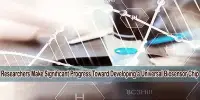In order to maximize the health benefits for everyone, a new study highlights the necessity to increase vaccination campaign funds for disadvantaged, vulnerable populations.
In order to maximize the health benefits for everyone, a new study highlights the necessity to increase vaccination campaign funds for disadvantaged, vulnerable populations.
Even when these people exhibit considerable vaccine hesitation, it enhances social utility and equality to prioritize vaccine provision for the most underprivileged communities.
An international research team co-led by Prof. Pan HUI from the Hong Kong University of Science and Technology (HKUST) and HKUST(Guangzhou), Prof. James EVANS from the University of Chicago, and Prof. Yong LI from Tsinghua University, reveals the key to breaking the dilemma of multiple ethical values from a data-intelligent epidemic model which can predict COVID-19 curves in US metro areas accurately.
Traditional epidemic models require significant assumptions about population mixing, i.e., that everyone mix uniformly in a region and, as a result, have an equal risk of contracting the virus and contracting it fatally. The COVID-19 pandemic clearly shows that this is not the case.
Instead, to account for the various COVID-19 hazards connected to various areas, the research team developed a model that explicitly considers movement behavior and demographic disparities.
In situations of scarce medical resources, it is crucial to smartly distribute them so society can make the most out of them. To this end, our study presents a possible pathway to improve vaccine distribution decisions with data intelligence. Hopefully, data accumulated and lessons learned from the COVID-19 pandemic can help us better prepare for future challenges.
Professor Pan HUI
The team was able to more accurately represent how various subpopulations mix by combining demographic patterns with data on human movement at the neighborhood level.
It’s important to note, for instance, that low-income families in this COVID scenario are worse off since they must maintain their prior level of mobility in order to survive, which puts them at higher risk. They should be vaccinated since they are a crucial target group because they are more likely to spread the disease (compared to many white-collar workers who can work from home).
Two important conclusions came from the investigation. It first emphasizes the significance of taking demographics and movement behavior into account when creating vaccine prioritizing plans.
The majority of current immunization programs are created wholly or in part based on age and occupation. In some areas, the US Centers for Disease Control and Prevention employ a socioeconomic vulnerability index to determine which vaccines should be prioritized.
However, it does not account for behavioral information or the varying chances of contracting and spreading COVID. In contrast, the suggested strategy significantly enhances the ability to target the most vulnerable individuals in order to maximize the benefits of the scarce vaccine supplies for all.
The researchers also point out that their smart model eliminated privacy leakage problems by using coarse behavioral data. In actuality, without any concern for privacy or other considerations, various aggregate data sources can be used to support epidemic models.
The authors support significantly increasing vaccination campaign funds for disadvantaged, vulnerable groups, which is the second key lesson. This applies to both outreach efforts and the possibility that immunizations could be ineffective due to slower uptake among people who have a larger vaccine hesitation, some of which have valid historical reasons.
However, more financing for these populations that move around and interact with members of the community helps to keep everyone safe. Even if the most underprivileged people have five times the amount of vaccine hesitancy as the wealthier populations, the benefit still exists.
Prof. Hui, Chair Professor of Emerging Interdisciplinary Areas at HKUST and Chair Professor of Computational Media and Arts at HKUST(Guangzhou), said, “Epidemics not only threaten our society as a whole but also exacerbate inequalities that may tear society apart, as disadvantaged communities face more obstacles in reducing high-risk contacts and seeking healthcare.”
“In situations of scarce medical resources, it is crucial to smartly distribute them so society can make the most out of them. To this end, our study presents a possible pathway to improve vaccine distribution decisions with data intelligence. Hopefully, data accumulated and lessons learned from the COVID-19 pandemic can help us better prepare for future challenges.”
















